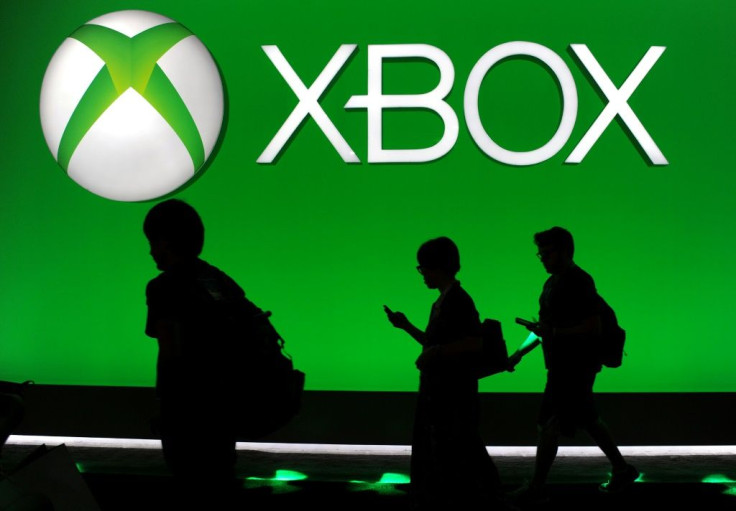Xbox Series S Hardware Specs Reveal A Capable, Affordable Next-Gen Console
KEY POINTS
- With its revelation as well as the announcement of its price yesterday, Microsoft has now detailed the hardware specifications of the Xbox Series S
- One of the key differences between the Xbox Series S and the more expensive Xbox Series X is that the former will plat at 1440p instead of 4K
- Microsoft built the Xbox Series S to offer “identical I/O performance” to the Xbox Series X courtesy of its solid-state drive and Xbox Velocity Architecture
A day after confirming the existence of the Xbox Series S, Microsoft has announced the hardware specifications of its smaller, cheaper next-generation console.
The key takeaway that one needs to know about the Xbox Series S is that it was made to play every single next-gen game as the more powerful Xbox Series X with one caveat: it will play at a lower target resolution of 1440p instead of 4K. Both consoles can play games at frame rates of up to 120 frames per second.
According to Microsoft, the Xbox Series S will still deliver the same visual fidelity as the Xbox Series X, capable of hardware-accelerated real-time ray tracing, variable-rate shading, and mesh shaders. It will also upscale the native-resolution output to 4K, Polygon reports.
By designing two consoles in parallel from the very beginning, we can deliver the same core gaming experience while also making it as easy as possible for developers to scale their games across both consoles with minimal effort,” said Jason Ronald, director of program management for Xbox.
“This means that Xbox Series S delivers the same incredible next-generation experience and features as Series X — just at a reduced rendering resolution,” he said in a deep-dive video for the Xbox Series S.
With four teraflops of graphics performance, this means that, on paper, the all-digital Xbox Series S is 33% less powerful than the current-generation Xbox One X and 67% less powerful than the Xbox Series X.
Yet it still delivers the same performance as the Xbox Series X because Microsoft built the Xbox Series S to offer “identical I/O performance” to the Xbox Series X courtesy of its solid-state drive and Xbox Velocity Architecture. What this entails is that Xbox Series X owners will also see the same improvements in loading times as on the Xbox Series X, among other benefits.
You’ve meme'd the design. Now find out how we fit all the next-gen load times, high framerates and dynamic worlds in our smallest Xbox ever!
— Xbox (@Xbox) September 9, 2020
Take a look Inside the Xbox Series S 👀: https://t.co/rUGcZKrzs2 | #PowerYourDreams pic.twitter.com/wTbjfCrVsE
The Xbox Series S contains “the same eight-core Zen 2 CPU architecture as the Xbox Series X,” said Ronald, except downclocked slightly to run at a constant frequency of 3.6 GHz instead of 3.8 GHz. The Series S GPU contains far fewer compute units — 20 instead of 52 — and runs at a slower frequency of 1.565 GHz compared to the Series X’s 1.825 GHz.
The lower raw numbers will not hold back the Xbox Series S too much because, according to Microsoft, of the “virtual memory multipliers” provided by the Xbox Velocity Architecture.
Another major difference is the internal storage. While both consoles deliver the same storage bandwidth — a read speed of 2.4 GB per second for uncompressed data and 4.8 GB/s for compressed data — the SSD in the Series S is half the size of the one in the Series X at 512 GB instead of 1 TB.
That might prove to be a dealbreaker for the Xbox Series S as storage requirements for many modern games are creeping up near the 100 GB mark, if not outright topping it.
With more and more games now being sold digitally (especially in light of the global pandemic), another key factor to consider is that the Xbox Series S will not have an optical drive. Owners of either next-gen Xbox console will be able to bump up their internal storage by buying a 1 TB Storage Expansion Card, although Microsoft has yet to announce the price for the proprietary device manufactured by Seagate.
Both consoles will support USB external hard drives, but you’ll only be able to play backward-compatible Xbox, Xbox 360, and Xbox One games from external storage. Next-gen games will have to be installed to the internal SSD or to a Storage Expansion Card.
A day after confirming its existence, Microsoft says the Xbox Series S also won’t have a 4K Blu-ray drive, which was a way for Microsoft to keep costs down. Still, the Xbox Series S will support 4K video output for streaming services like the Xbox Series X will.
Microsoft just announced that both consoles will support Dolby Vision HDR at launch for services such as Disney Plus, Netflix, and Vudu. The next-gen consoles will also get Dolby Vision support for games sometime in 2021, and they both feature an HDMI 2.1 output for cutting-edge video features such as variable refresh rate and auto low-latency mode.

© Copyright IBTimes 2024. All rights reserved.





















